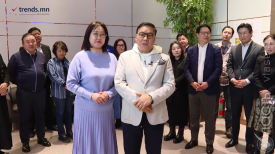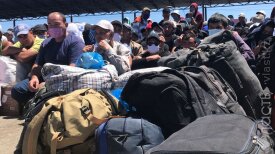My grandmother was born in Arzamas-16. That’s how the village of Sarov was renamed after the world's first nuclear test at the American test site Alamogordo. Arzamas-16 disappeared from the maps of the Soviet Union, as it began to develop its own nuclear weapons.
Her uncle worked at a plant making thermonuclear weapons for only 45 minutes a day, inserting plutonium rods into the reactor. After that, he and his colleagues washed themselves for several hours until the Geiger counter stopped going off scale.
It was with the help of my relatives and others that, in 1953, Andrei Sakharov and Yuli Khariton created the first RDS-6s hydrogen bomb in Arzamas-16. It was tested at the Semipalatinsk test site on August 12 of the same year.
“The spectacle was majestic and at the same time terrible. A column of dust several kilometers in diameter rose high into the sky. A gray-brown poisonous cloud was spreading overhead. The experimental field was in darkness, the sun's rays could not penetrate the dust. The situation seemed terrible. Someone's nerves could not stand it, and there was a cry: ‘Why, this is thermonuclear!”, – recalled engineer Sergei Davydov, who was present during the explosion.
The first nuclear test at Semipalatinsk had been carried out in 1949. Until it was shut in 1991, for 42 years, 476 nuclear explosions with a total capacity of 50 megatons occurred at the test site. A conservative estimate of the victims accounts for at least 1.3 million people affected by the test.
My grandmother's employment record says she worked as a house painter.
Christopher Nolan's Oppenheimer, which was released in Kazakhstan on July 20, vividly and loudly showed the audience the truth about the destructive power of nuclear weapons. The people of Kazakhstan, which probably suffered the most while the Soviet Union was engaged in this ridiculous arms race, seemed to experience catharsis. They realized that the bombings of Hiroshima and Nagasaki are not just textbook examples, not only a show of power, but also the painful deaths of more than 200,000 people. Even under the noble pretext of suppressing fascism.
Will the biopic help us understand that the consequences of Robert Oppenheimer's invention have affected us all? Probably not. Kazakhstan’s authorities are not interested in this. The victims of nuclear testing in Kazakhstan have not received nearly enough compensation and often cannot access full examination and further treatment. Instead, some of them still live dangerously close to the Semipalatinsk test site, the emptiness of which is reminiscent of our common habit of turning a blind eye to the most terrible historical events.
I remember the long cries of a mother of a 12-year-old girl who died from a rare autoimmune disease caused by an adverse environment. Their family lived near the Semipalatinsk test site. Even better, I remember the face of my grandfather dying of cancer. And I always ask myself: “Would they be alive had something so destructive not been created?”.
Поддержите журналистику, которой доверяют.








